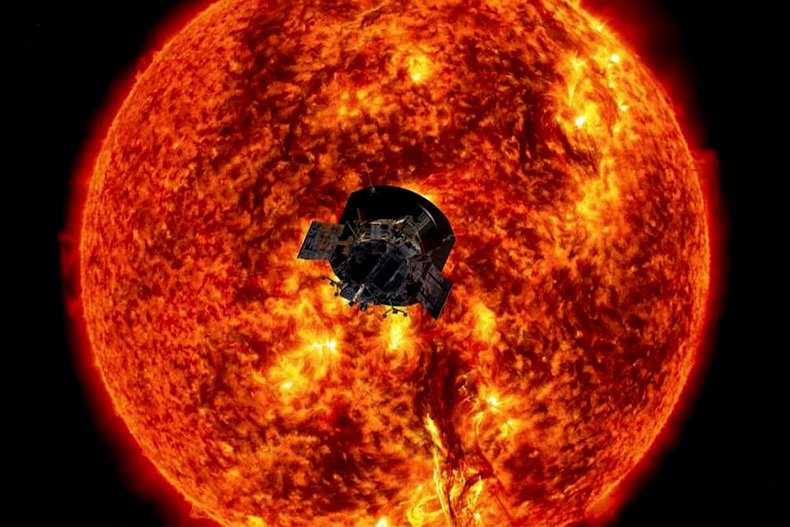On December 24, NASA’s Parker Solar Probe set a new record for the closest approach to the Sun. On Friday, December 27. The US Space Agency acknowledged the accomplishment.
According to NASA, the Parker Solar Probe is traveling “to touch” the Sun. Since its 2018 launch, it has been progressively approaching the sun by gravitationally. Also drawing it into a closer orbit with it through flybys of Venus.
The Parker Solar Probe made a record-breaking close approach to the solar surface. Yet it survived. It soared into the corona, the outermost layer of the sun’s atmosphere.
The spacecraft could not communicate with Earth. Hence it was close to the sun because of signal transmission limits.
According to reports, the spacecraft’s condition following the flyby was not communicated to its operators until December 27.
Late on December 26 (local time), NASA finally received the “beacon tone” from Parker Solar Probe, indicating the spacecraft was secure.
NASA said
“After seven days of silence, Parker has resumed communication with Earth, confirming it’s healthy after soaring just 3.8 million miles from the solar surface — the closest a human-made object has ever been to a star,”.
It was only the closest solar flyby ever recorded.
With a speed of almost 430,000 mph (690,000 kph), Parker was able to fly from Washington. According to the NASA website, the spacecraft experienced temperatures as high as 1,800 degrees Fahrenheit.
On January 1, the spacecraft is expected to return comprehensive telemetry data on its condition.



